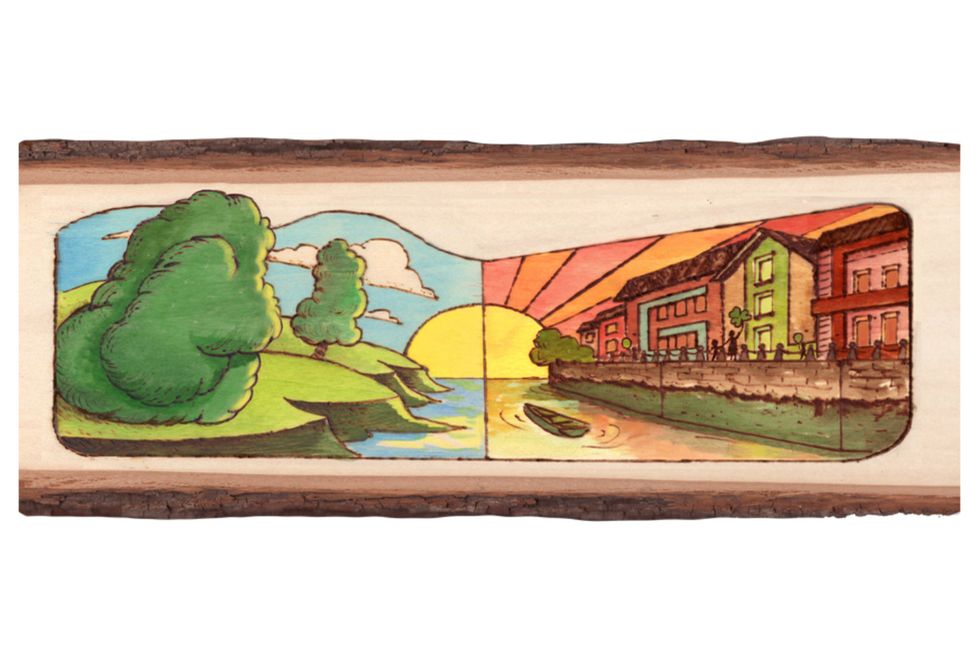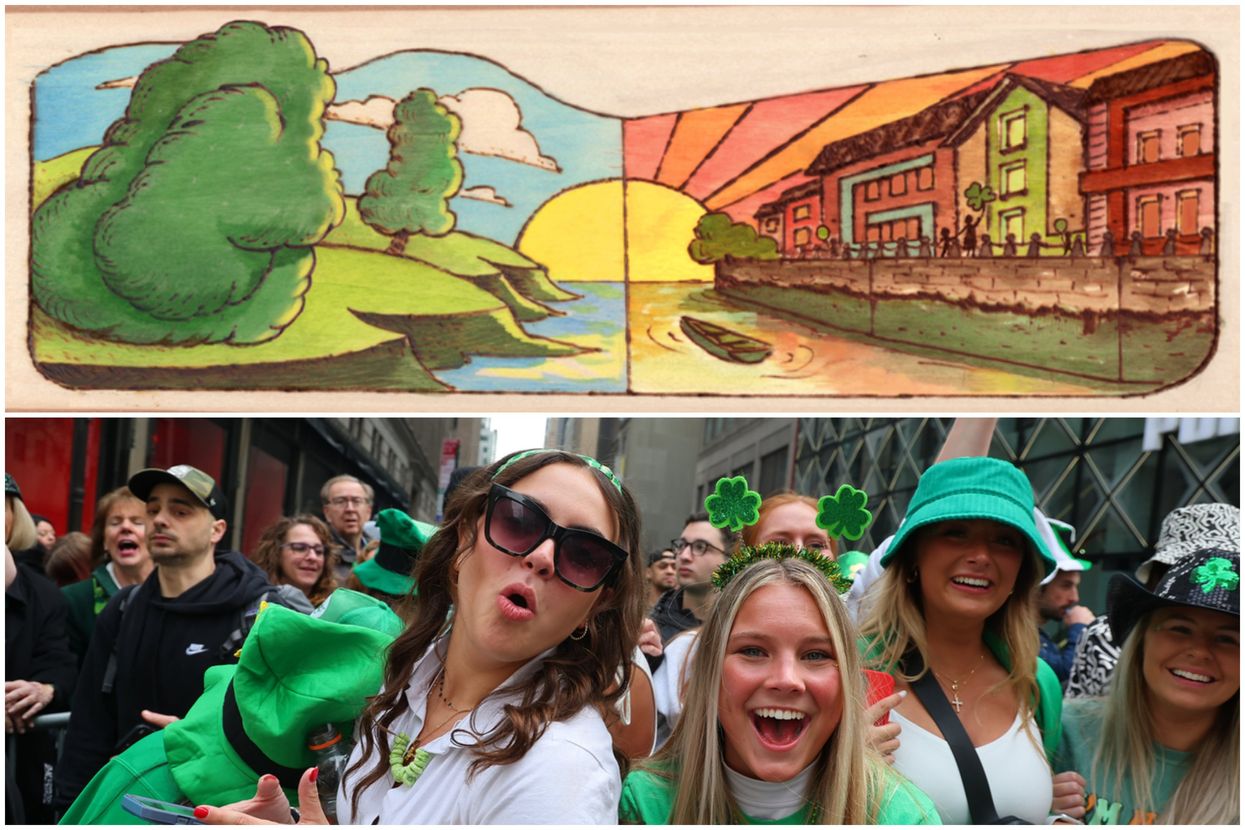Harriet Brewis
Mar 17, 2024
St. Patrick's Day has become a secular holiday of revelry
Scripps News / VideoElephant
Today (17 March) looks set to be the St Patrick’s Day to end all St Patrick’s Days thanks to yesterday’s victory in the Six Nations.
Ireland’s rugby team clinched a grand slam in the tournament, cementing their status as the world’s best, and giving the Irish an added cause to celebrate on Sunday.
And yet, Google, for one, has decided to mark St Paddy’s not with a nod to the various Guinness-fuelled parades that will be taking place across the globe, but with a picture of peace and tranquillity.
Head to the search engine’s homepage and you’ll see a dual portrait of a serene landscape – one half at dawn and the other at dusk.
The left side of the Doodle – which was created using a wood burning technique – shows emerald cliffs dotted with huge, cumulus trees, and the right shows a town bordering the water, and a stick woman holding the hand of a child as she proudly brandishes a shamrock.
“What has this all got to do with St Patrick’s Day?” you may well ask. Well, according to Google, the illustration is a homage to “the beautiful landscape of Ireland, from countryside to the city.”

In a blurb to the Doodle, it notes: “The large-scale parades we associate with the occasion didn’t become a familiar sight in Ireland until the late 20th century.
“Many cities across The Emerald Isle now host lively parades featuring fiddles, bodhráns (an Irish drum), and the rhythmic footwork of traditional Irish dance.
“Meanwhile across the Atlantic Ocean, two million bystanders gather in New York City each year to enjoy the largest St. Patrick's Day parade in the world — which features up to 250,000 marchers.”
It adds: “New York City may boast the largest St Patrick's Day parade, but it’s certainly not the oldest.
“One of the earliest celebrations took place in Boston in 1737, as an act of solidarity for the city's Irish immigrants.
“Little did they know, their small tradition would evolve into worldwide global celebration.”
And indeed, the festivities seem to get bigger and more flamboyant every year, with Chicago even dyeing its river green to mark the event.
But who even was St Patrick? And why is his saint’s day such a big deal?
St Patrick is the patron saint of Ireland, and is credited with bringing Christianity to the country during the fifth century.
And yet – whisper it – he was not actually Irish, according to experts, who claim that he was, instead, born in Scotland then brought by Irish raiders into slavery in Ireland when he was 16 years old.
However, after six years, he managed to escape back to Britain where he heard a “call” to return to Ireland and spread the word of God among its people.
Before the end of the 7th century, Patrick had become a legendary figure. Myths surrounding him include that he raised some 33 men from the dead and that he drove the snakes of Ireland into the sea.
Perhaps the most popular legend is that of the shamrock – Ireland’s most famous emblem. According to the Encyclopedia Britannica, Patrick used it to explain the concept of the Holy Trinity to an unbeliever by showing them the three-leaved plant with one stalk.

So why is St Patrick’s Day celebrated beyond Ireland, particularly the US?
In a nutshell: Irish people came to America and brought their culture with them. St. Patrick’s Day observances date back to before the founding of the US, in places like Boston and New York. The first parade was held in Manhattan in 1762, the Associated Press reports.
While the day was marked with more of a religious framing and solemnity in Ireland until well into the 20th century, in America it became the cultural and boisterous celebration it is today, marked by plenty of people without a trace of Irish heritage.
Sign up for our free Indy100 weekly newsletter
Have your say in our news democracy. Click the upvote icon at the top of the page to help raise this article through the indy100 rankings
Top 100
The Conversation (0)














